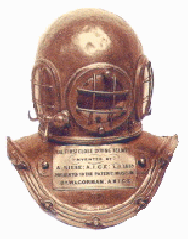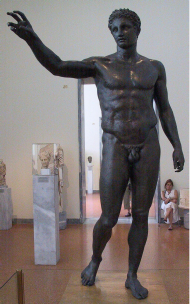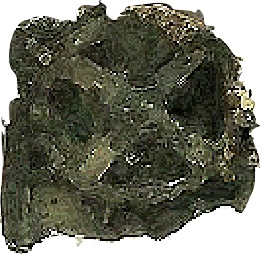1819 German inventor August Siebe invented divers helmet which was miniaturized version of diving bell. This copper helmet which only covered the head was fed by a pump from the surface. This device obliged the divers to stand upright, if not their helmet would be filled with the water.
1827 Annesio Fusconi used diving bell which had 2.5 meters diameter for the Roman shipwrecks at the Lake Nemi.
1836 Deane Brothers who worked as salvage divers for British Government discovered remains of Mary Rose, British ship with historical significance. Mary Rose had been captized by the French Fleet in 1545.
1839 A. Siebe added watertight suite to his helmet. This great invention which gave great mobility to divers was used for nearly a century.
1853-4 After a prolonged drought, the levels of many lakes in Europe went down and revealed the wooden posts. It was suggested that these were the remains of wooden dwellings built on the lakes. Discoveries at these lakes led to the new search on the other lakes.
1870 First underwater campaign carried out by French Banker, Magen who was willing to discover the riches of Spanish Galleons, sank by British Dutch war fleets, while returning from America. During this organized underwater excavation newly invented underwater light projector was first time used.
This search also draw attention of the scholars to one major point. First of all, during this 744 hours total diving time some of the divers got ill and suffered from unexplained diseases.
1878, Paul Berth an Sorbonne professor put forward the theory that divers problem came from the diluted gas in their blood while they were bread and under the pressure.
In the spring of year 1900, in Antikythera, northern Crete, Greek divers who were returning from North Africa discovered a shipwreck with notable cargo consisting of marble and bronze statues. With the support of Greek Government, a great number of statues were raised to the ship from 40/55 meters depth to the surface of the water. The finds of Antikythera shipwreck caused great arguments among the scholars. Some dated the wreck to 4thcentury BC. But some others suggested the bronze statues were already antique ones when the ship sank and as to marble statues these were Roman copies of Greek Originals and dated the ship to a later period. A further study on amphorae showed that the shipwreck dated to 80 or 70 BC and ship was carrying a cargo of statues originating from west coast of Anatolia. This was possibly Pergamon.
During the 9 months of diving, one of the divers died and two became invalid for the rest of their lives.
Few years after the Antiqitera casualties, Scottish physiologist John Aldine conducted experiment with the divers of the Royal Navy and published first diving tables to avoid the decompression sickness covering up to depths. of 60 meters. Unfortunately it was too late for Antiqutera divers.





